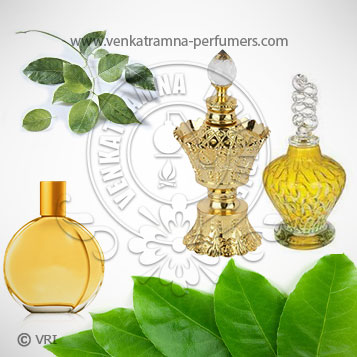
| Botanical Name | Cinnamonum Camphora |
| Common Name | Karanj Oil, Karanja Seed Oil |
| Country of Origin | India |
| Solubility | Insoluble in water, soluble in alcohol and oils |
| Specific Gravity | 0.950 @ 72°F |
| Optical Rotation | 23.5 |
| Refrective Index | 1.475 @ 72°F |
| PlantPart | Wood |
| Bland With | Basil, chamomile, cajuput, lavender & Melissa. |
| CAS No | 76-22-2 |
| Flash Point | 72°C |
| Extraction Method | Steam Distilled |
Camphor essential oil offered is extracted from Cinnamomum Camphora (also known as Laurus camphora) of Lauraceae family. Also well known by the name of true camphor, gum camphor, hon-sho and Japanese and Formosa camphor, it finds usage in meeting the treatment needs of nervous depression, inflammation, acne and arthritis. The Cinnamomum Camphora oil extracted from the leaves, stem and bark of the plant is used in the pharmaceutical and perfume industry. Camphor is also used as spices and culinary herbs. The leaves are used as animal feed. Cinnamomum Camphora oil is considered of medicinal importance in Ayurveda and Unani system of medicine. It is anti-fungal, anti-bacterial, anti-inflammatory, anti-spasmodic and anti-oxidant in nature. It is used to treat cough and cold, skin diseases and improves digestive system. Due to the strong fragrance and bitter flavor it is used to make perfume and to treat many parasitic infections. Cinnamomum Camphora oil also gives cooling sensation like menthol and gives relief in toothaches. The Camphor plant is traditionally used to treat many diseases that causes inflammation, irritation and itching.
In China and Japan, Cinnamomum camphora must be at least 50 years old to produce oil, and can often grow as old as a thousand years. Among its many uses, it was used as a deodorant and in embalming, and camphor wood was used to build ships and temples because of the woods durable and aromatic properties. Camphor was used medicinally, such as a remedy against the plague in ancient Persia. In the past was a culinary ingredient, and was cited in the Q'ran 76:5 as a flavoring for drinks, though now an amount of 2 grams is considered toxic. C. camphora is a designated noxious weed in north-eastern New South Wales and an important weed in south-east Queensland, Australia). It dominates the landscape in cleared or disturbed hillsides, valleys and watercourses approximately 100 years after it was extensively planted as an ornamental tree species, particularly on elevated krasnozem soils. C. camphora bears heavy fruit loads which are attractive to a number of bird species, which spread seed extensively, and seed have excellent viability in the first year. It forms single-dominant stands that dominates other vegetation and is a major economic weed pest to landholders, power authorities and local councils. It is spreading in other agricultural areas on the east coast of Australia, and there is potential for spread in other sub-tropical areas throughout the world. Camphor tree is a medium to large evergreen tree with a broad, dense and symmetrical crown. The tree is tall with wide spreading branches and a trunk. Mature leaves are green in color and broad. The tree also bears white to cream colored flowers in spring season and red berries.
Color : Colorless to pale yellow liquid @22C with Camphorous Odor,
Aroma : Camphor Essential Oil has a strong, penetrating, fragrant odor.
(p)-limonene p-cymene a-pinene 1,8-cineole sabinene
Camphor oil is used in treatment of nervous depression, inflammation, acne, arthritis, muscular aches & pains, rheumatism, sprains, bronchitis, colds, coughs, fever, flu & infectious diseases. As oil is toxic, it can be used in vapor therapy to ease respiratory problems. Camphor has been used for many centuries as an antiseptic, an aphrodisiac, a culinary spice, and a component of incense and for cold remedy and other medicinal purposes. Camphor is known to modulate sexual activity, contraception, induce abortion, and reduce milk production in lactating women. It can pass the placental barrier and affects embryo development. Recently, investigations have shown that camphor-containing compounds have uterotrophic, antitussive, anticonvulsant, nicotinic receptor blocking, anti-implantation, antiestrogenic, as well as estrogenic activities, and reduced serum triglyceride and thyroid hormone. Camphor has demonstrated a dose-dependent decrease in human sperm motility and viability, which counts for decreasing effectiveness for fertilization and thus acts as a contraceptive.